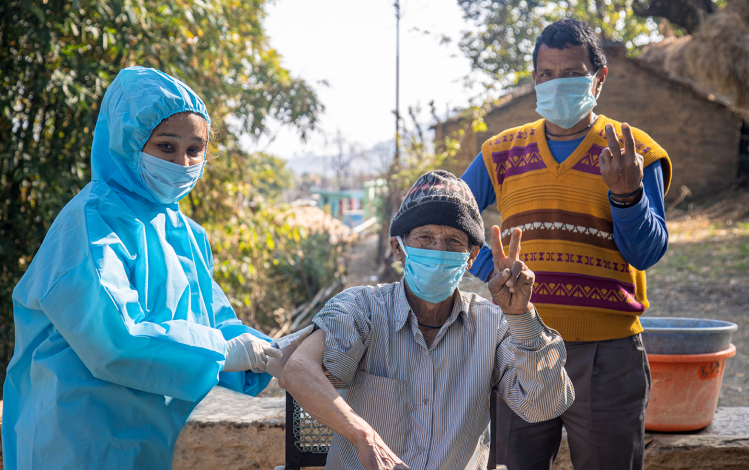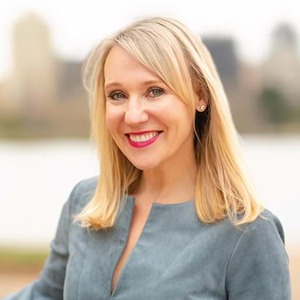

Moving the Needle on COVID-19
In the early days of COVID-19, most of us thought we were dealing with a health crisis only. But it quickly became clear that the epidemic was also generating an information crisis. On this front, the communications community heard the call and harnessed its collective power to motivate people to be part of the solution.
Recently I gathered a think tank of individuals who specialize in divergent industries to discuss ways WE and its partners and allies are helping to clear up confusion on vaccination and committing to initiatives to improve access to vaccination and support communities most at risk.
During this discussion, we found we clearly differentiated between initiatives that achieved genuine impact and those that didn’t. There were three key factors: people passion, accurate information and tech innovation. Our group discussed the different ways WE and partner brands are lending their support by enlisting help from customers and employees, harnessing the power of technology, and providing information that is accurate, understandable and actionable. Co-hosted by Hannah Peters, WE EVP Corporate Reputation and Brand Purpose, our four expert panelists and passionate human beings shared some powerful insights:
Greer McCracken, Cotton On Group General Manager, Global Communications, Workplace and Wellness
Liz Hebditch, Account Director Health Team, WE Australia
Catherine Devaney, Deputy Managing Director UK and Health Lead, WE UK
Nitin Mantri, Group CEO Avian WE
Beth Keebler, VP Consumer and Global Impact Lead, WE North America
Empowering Customers
With a crisis as big and overwhelming as COVID-19, McCracken said Cotton On knew it needed to empower customers to play a role, no matter how small, to make a difference.
So, the Cotton On Foundation — the philanthropic arm of Cotton On — became the first global retailer to partner with UNICEF, fundraising across its global store network to support the delivery of 1 million vaccine doses to some of the world’s most remote and vulnerable communities across the globe. The program donated 100% of all proceeds raised through the purchase of items such as masks, tote bags and water bottles to UNICEF to deliver COVID-19 vaccinations, diagnostic tests and treatments.
“It’s a really empowering thing for people to be able to do their bit without feeling like it’s a monumental task. It’s such a feel-good factor to be able to play a part in helping solve something as big as COVID in any small way. That's a really great thing for our customers and our team as well,” McCracken said.
The campaign was part of Cotton On’s ongoing efforts to bring its customers and 20,000 team members along on its philanthropic journey. The Cotton On Foundation has fundraised to empower youth globally since 2009, raising more than A$120 million, and its programs have a truly remarkable engagement rate — 1 in 3 Cotton On customers purchase a Foundation product every single time they shop.
McCracken says that part of Cotton On’s success is its ability to locate the right partners. “UNICEF are experts in public health, and we’re absolutely not. What we do well is partner with our customers to really fundraise for causes that are close to our hearts,” said McCracken. “So, for us it was about finding a partner that had credibility in this space where we shared the same vision and values around what this program needed to solve."
Providing Clear, Understandable Info – Respectfully
Hebditch described how WE and its clients worked to counter the problem of COVID-related misinformation. She explained that the sheer volume of new complex and often scary information created a deep knowledge gap when it came to COVID-19 vaccination information. The problem was exacerbated by the fact that in the early months of the pandemic, scientists spoke in technical language that was hard for most people to understand. “We noticed that without an underlying knowledge of the scientific rationale, it’s hard for people to spot the difference between misinformation and fact,” Hebditch said.
So, the team created a COVID Vaccine 101 fact sheet that addresses common questions the team was hearing among family, friends and the media. “We wanted something tangible that people can look at quietly in their own time. This was not to persuade but to inform. Our purpose as health communicators is to help people make informed decisions about their health,” she said.
Devaney provided critical historical context about how vaccines can be vulnerable to misinformation. In 1998, Dr. Andrew Wakefield published research in The Lancet claiming a link between the MMR vaccine and autism. “He held a press conference to reveal his findings. The media grabbed hold of the story and ran with it,” said Devaney. Despite being discredited by 10 of the 12 authors of paper, and being disproved by numerous other studies, this misinformation is enduring to this day.
“It was a perfect storm. Wakefield was charismatic and media-savvy. To remain balanced, the media offered one anti-vaxxer for every pro-vaxxer interviewed, even though 99.9% of the medical community criticised the study,” said Devaney.
The original anti-vax story provides important insights for those wishing to combat misinformation today. Devaney explained that many of the publishers of the story had children or grandchildren with autism and were primed to hear about a fix. The 2021 takeaway: “Those on the receiving end of misinformation have an absolutely legitimate concern. No one wants to cause harm to themselves or to loved ones, and we don't want to either. As communicators, we need to be respectful and listen to those concerns. Through understanding that perspective, we can then create information that actually addresses the right points in the right way.”
Empowering Employee Innovation
Keebler went on to describe WE’s work with Intel’s $50 million Pandemic Response Technology Initiative. Partnering with 170 organisations around the world, the employee-led initiative harnessed Intel’s computer power into sequencing RNA structure that could help in vaccine development. It also collaborated with NASA to create enriching learning curricula for students, and with Purdue University to create a robot that could identify the virus and physically clean spaces. Intel powered cloud and AI platforms to get COVID information out more quickly. “Intel made it a priority to identify ways that their technology could help expedite sharing information and identifying trends that would not be possible without their portfolio of technology,” said Keebler.
Led by employee volunteers, the program had high engagement among Intel staff. Any employee was welcome to join an action room and bring a project from their local community for consideration. In Houston, for example, one Intel employee provided a local hospital with the technology to create a virtual ICU. “It gave a lot of motivation to employees around the world, seeing people like them use tech to help people in the crisis,” she said.
Intel plans to continue the program to support a range of issues including sustainability, diversity, equity and ongoing pandemic support. “Just as retail brands want to help customers feel that they can do something to help, it’s the same thing with employees,” concluded Keebler.
Recruiting Superheroes
Nitin Mantri described the incredible devastation in India with the second COVID wave, and how hard it was for Avian WE employees, saying he didn’t know a single person in Delhi or Bombay who hadn’t lost someone close to them. “It was really, really devastating.”
The team coordinated with client and local hospital network Fortis Hospitals to create a vaccination site at the Avian WE offices to vaccinate their team — and opened it up to the larger community of PR agency staff, vaccinating more than 300 people.
In another initiative in June, the team worked with Dettol on a hygiene campaign that honored and humanised frontline COVID Warriors, creating Dettol packs with a picture of the warrior and some background on what they did. “These are not doctors. These are everyday people who helped people,” he said.
Avian WE has also worked with the Rockefeller Foundation on smart testing and tracing reports, joining the COVID Action Collaborator to bring together nonprofits and businesses to support people in need.
Mantri also spoke with heart about the importance of facing difficult facts: India will not be able to get its people vaccinated in the way the US has been able to.
But it is harnessing the collective power of people to make a positive impact. Avian WE asked its employees to accept a specific challenge: help five people who live in poverty or off the grid to get vaccinated (in India, you must register online to get vaccinated).
These moves, big and small, allow everyone to participate. “We can all be superheroes,” he said.
A Framework for Hope
Listening to the sincerity of these leaders explaining how important it was to each of them, personally, to use their gifts of communications and their platforms to help during an ongoing crisis was inspiring. I was reminded of a quote by Helen Keller: “Alone we can do so little; together we can do so much.” No matter the road ahead, we know that helping people must be at the heart and purpose of everything we do, and that we must always communicate with honesty and accuracy. I’m certain technology will continue to be our lifeboat as we move through the next several months — with hope in our hearts. My sense of hope during this session increased exponentially. I hope sharing this does the same for you as well.
The latest blogs from WE
MNCs in China Must Prioritize Internal Communications
To Tell Your ESG Story, Think Digital
5 Ways Tech Will Reshape Culture in 2024


